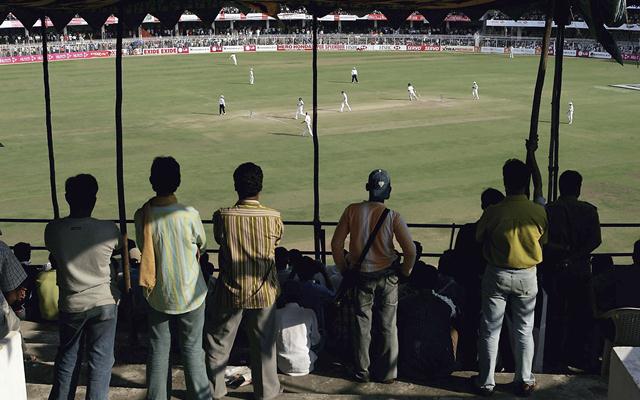November 26, 1995: The Nagpur ODI tragedy
The VCA officials continued the game without informing the players about the incident.
2 Min Read


November 26, 1995: On a Sunday, the Vidarbha Cricket Association Stadium in Nagpur got a chance to host its first ODI game in five years which was to be played between India and New Zealand. Both the teams faced off in a World Cup game in 1987 at the same venue where Chetan Sharma became the first player to take a hat-trick for India and later Sunil Gavaskar scored his only ODI century to take his team to a 9-wicket victory.
In front of a near capacity crowd on a holiday, the visitors smashed a record total of 348 after being put into bat but what followed in the stands could be regarded as one of the biggest ever disasters in cricket. While the spectators in the East Pavilion’s third tier tried to come down and those in the 2nd tier moved up during the interval, the newly built wall of the staircase collapsed due to the pressure. The debris of the wall fell on the people in the lower stands, and as a result, three people died on the spot and six others lost their lives in hospital.
The massacre left over 70 people in the East Pavilion injured, however, the VCA officials continued the game without informing the players about the incident. The wall was constructed as a preparation of the World Cup that was to be played later in the next year. Investigations revealed that the wall was built without reinforcement and a total of four people including the architect and contractor were charged with the act of negligence.
The venue later hosted a decent number of matches including an Australia-Zimbabwe game in the 1996 World Cup. A new stadium was built in Jamtha, Nagpur and replaced the VCA Stadium for high profile matches with the same name. 22 years after the incident, the new VCA Stadium is hosting a Test match between India and Sri Lanka while the old ground hosting the Ranji Trophy game between the hosts Vidarbha and Himachal Pradesh.
New Zealand’s 99-run victory:
Talking about the ODI game, New Zealand posted 348/8 on the board in the 50 overs, their highest total in ODI cricket at that time. Nathan Astle’s 114-run knock helped the likes of Martin Crowe (63) and Stephen Fleming (60) to attack the Indian bowling and post a huge total. Sachin Tendulkar, who dropped Astle in the 12th over, tried to revive his mistake with a quick-fire innings at the top. The master blaster scored a 59-ball 65 including a 20-run over off Danny Morrison.
Lack of support from the other end resulted in Tendulkar running himself out attempting to hike the run rate. Ajay Jadeja (61) and Sanjay Manjrekar (44) were only other notable contributions for India with the bat as they were bowled out for 249 in the 40th over scoring runs at 6.3 an over.
Download Our App